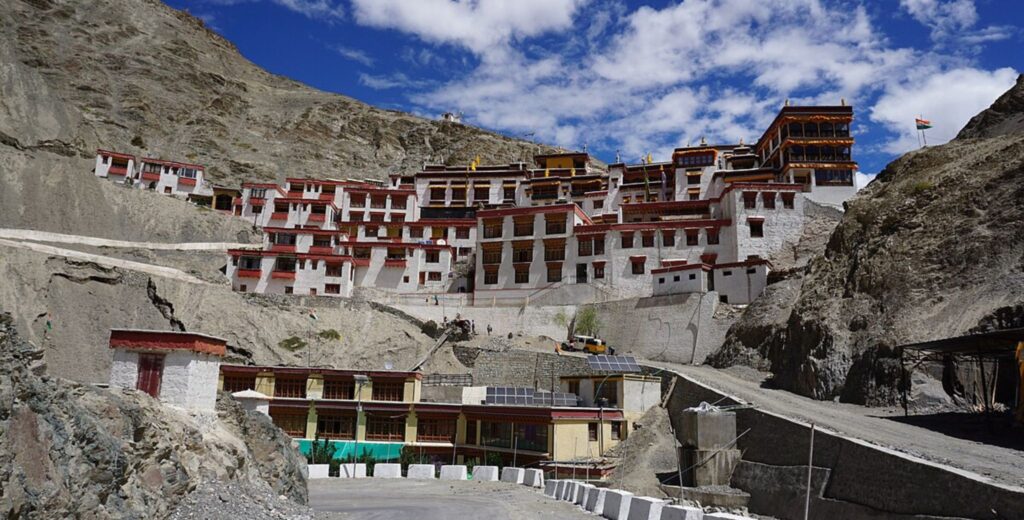Welcome to the cave monasteries of Ladakh, a land of mesmerizing landscapes and deep spiritual roots
It invites adventurers and spiritual seekers alike to explore its ancient monasteries, perched precariously on high cliffs and hidden in remote valleys.
These Cave monasteries of Ladakh are not just architectural marvels but epitomes of serenity and solitude, offering a glimpse into a timeless tradition of Buddhist monasteries in Ladakh.
This journey will take you through some of Ladakh’s most fascinating cave monasteries, each with its unique charm and spiritual significance.
Pilgrimage to the Cave Monasteries of Ladakh
1. Hemis Monastery
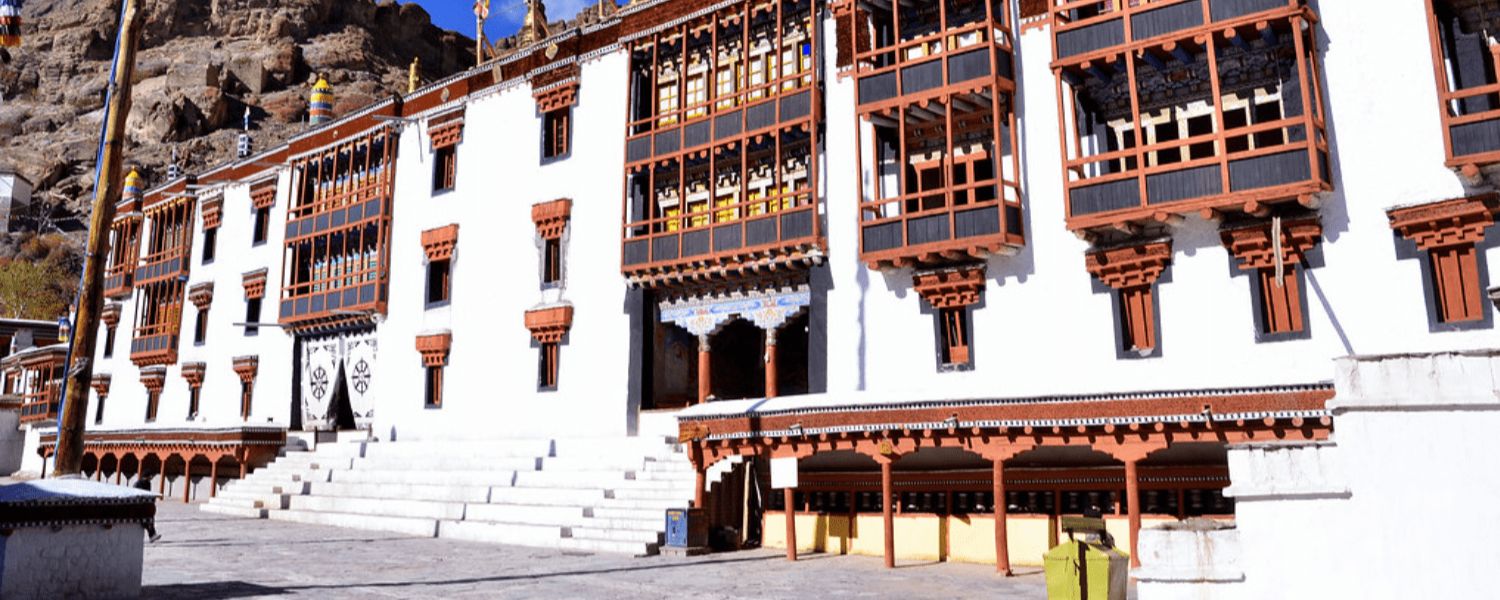
Nestled in the picturesque Hemis village, the Hemis Monastery stands as one of Ladakh’s largest and wealthiest cave monasteries, making it a key highlight among the places to visit in Ladakh.
Established in 1630 by the first incarnation of Stagsang Raspa Nawang Gyatso, it is renowned for its annual Hemis Festival, a vibrant celebration that attracts thousands of visitors.
The festival, held in June or July, honors Guru Padmasambhava’s birth anniversary. During this time, the monastery’s courtyard transforms into a colorful spectacle with masked dances and sacred plays.
Visitors trekking to Hemis will be captivated by the rich collection of ancient relics, statues, and the awe-inspiring 12-meter-long thangka.
2. Thiksey Monastery
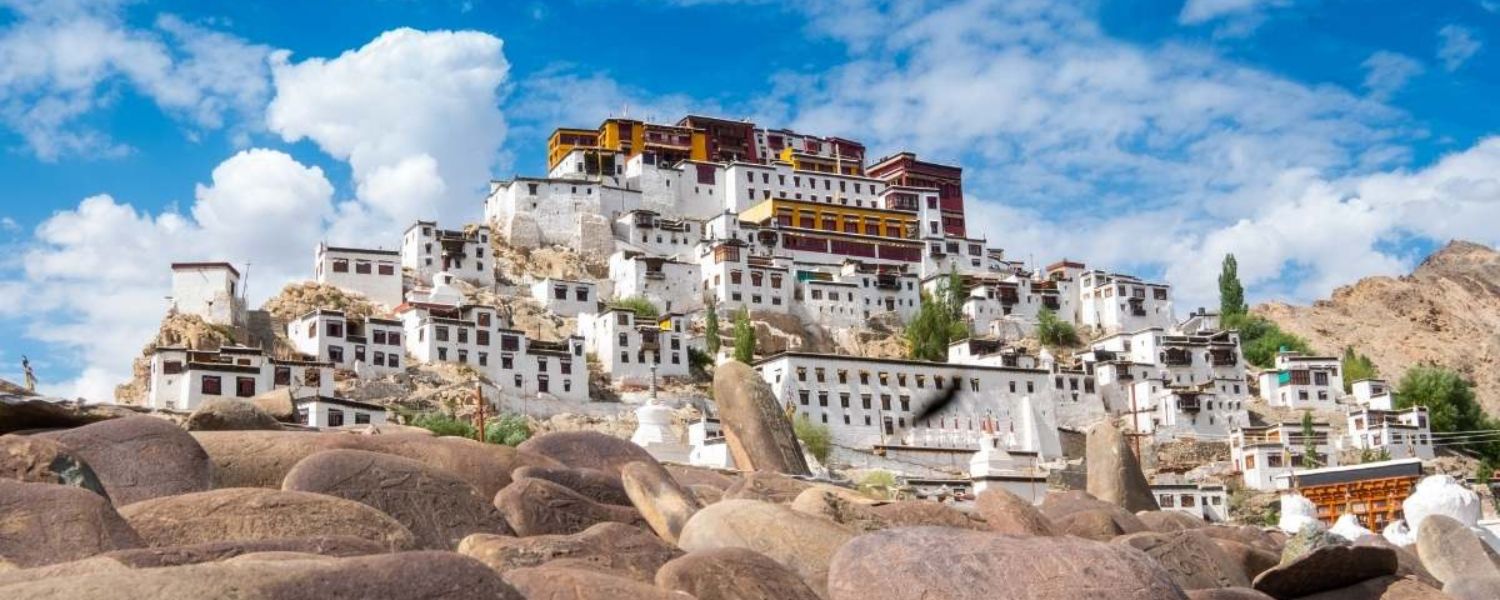
A visit to Thiksey Monastery, often referred to as ‘Mini Potala Palace,’ is a must for those trekking through the cave monasteries of Ladakh.
Situated at 3,600 meters, it offers panoramic views of the Indus Valley. This twelve-story complex houses numerous stupas, statues, thangkas, and a large pillar engraved with Buddha’s teachings.
The monastery’s highlight is the 15-meter tall statue of Maitreya Buddha, the largest in Ladakh, it was put in place to honor the 14th Dalai Lama’s visit in 1970.
The early morning prayer ceremonies at Thiksey provide a profoundly spiritual experience, drawing visitors into the serene rhythms of monastic life.
3. Diskit Monastery
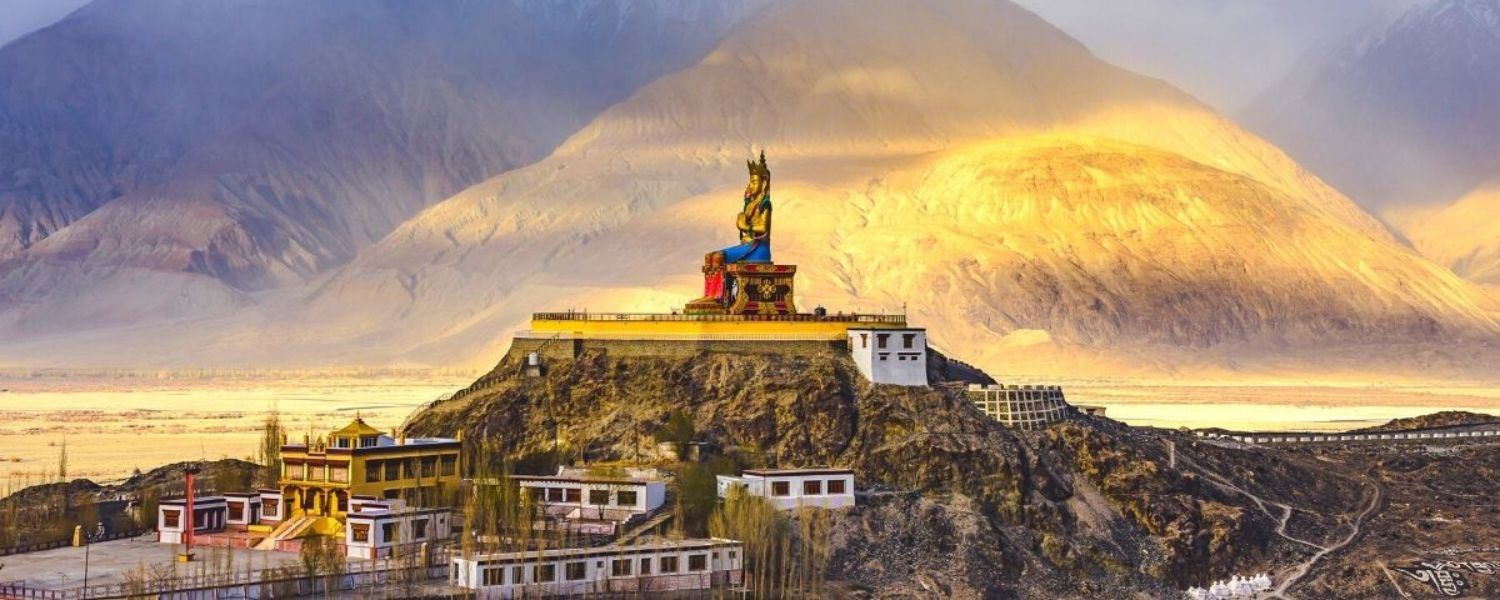
Perched atop a hill overlooking the Shyok River, Diskit Monastery is the oldest monastery in Ladakh and the Nubra Valley’s biggest Buddhist monastery.
Further, founded in the 14th century by Changzem Tserab Zangpo, it is home to a 106-foot-tall statue of Maitreya Buddha, which dominates the skyline.
Moreover, this statue was inaugurated by the Dalai Lama in 2010 and symbolizes peace and protection for the region.
Trekking to Diskit Monastery offers an opportunity to explore its prayer hall, which houses a statue of Cho Rinpoche (Crowned Buddha) and a variety of ancient murals and scriptures.
The monastery’s proximity to the dunes of Hunder adds a unique touch to the trekking experience.
Additionally, visiting Diskit Monastery provides a glimpse into the vibrant festivals in Ladakh that celebrate the region’s rich cultural and religious heritage.
4. Alchi Monastery
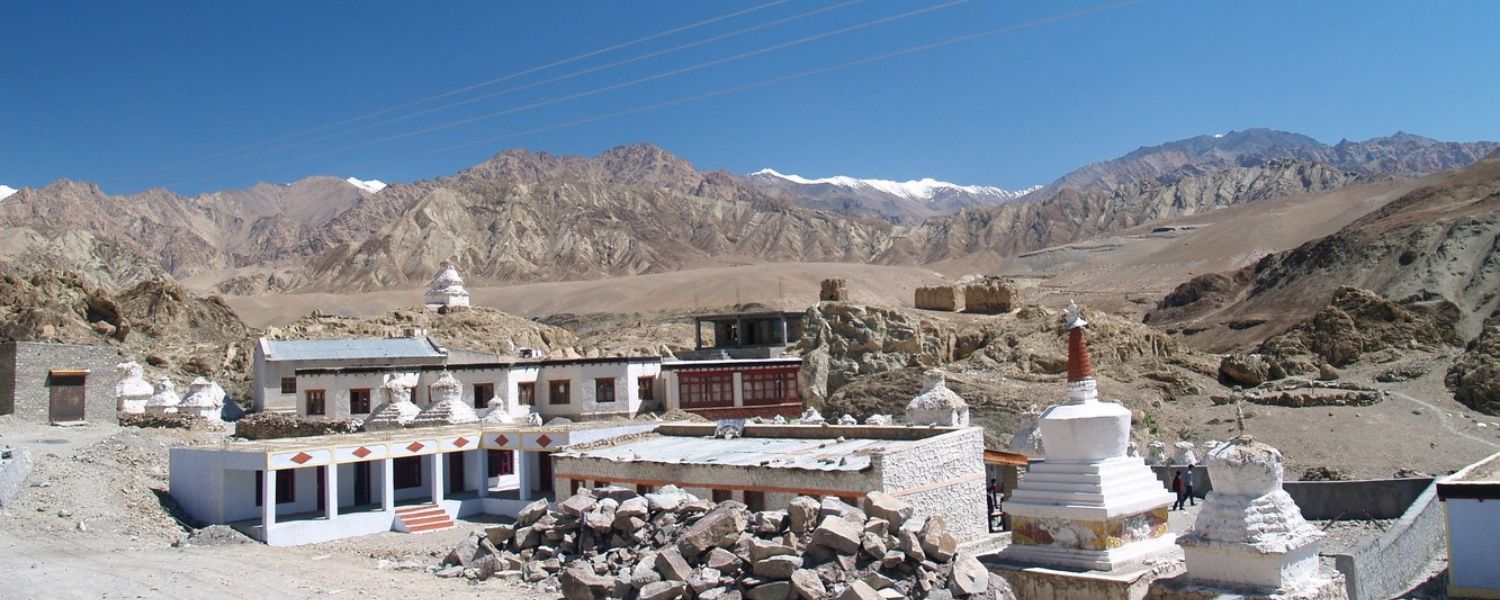
Additionally, Alchi Monastery, located on the banks of the Indus River, stands out for its exquisite murals and artwork that date back to the 11th century.
Unlike other monasteries in Ladakh, Alchi is situated on flat ground, enabling hikers to reach it with ease.
The monastery complex comprises several temples, with the Dukhang (Assembly Hall) and Sumtseg being the most prominent.
The intricate wood carvings and ancient paintings depicting Buddhist themes are a testament to the region’s rich artistic heritage.
Alchi’s serene environment and historical significance make it a must-visit for those exploring cave monasteries of Ladakh spiritual landscape.
5. Shey Gompa and Palace
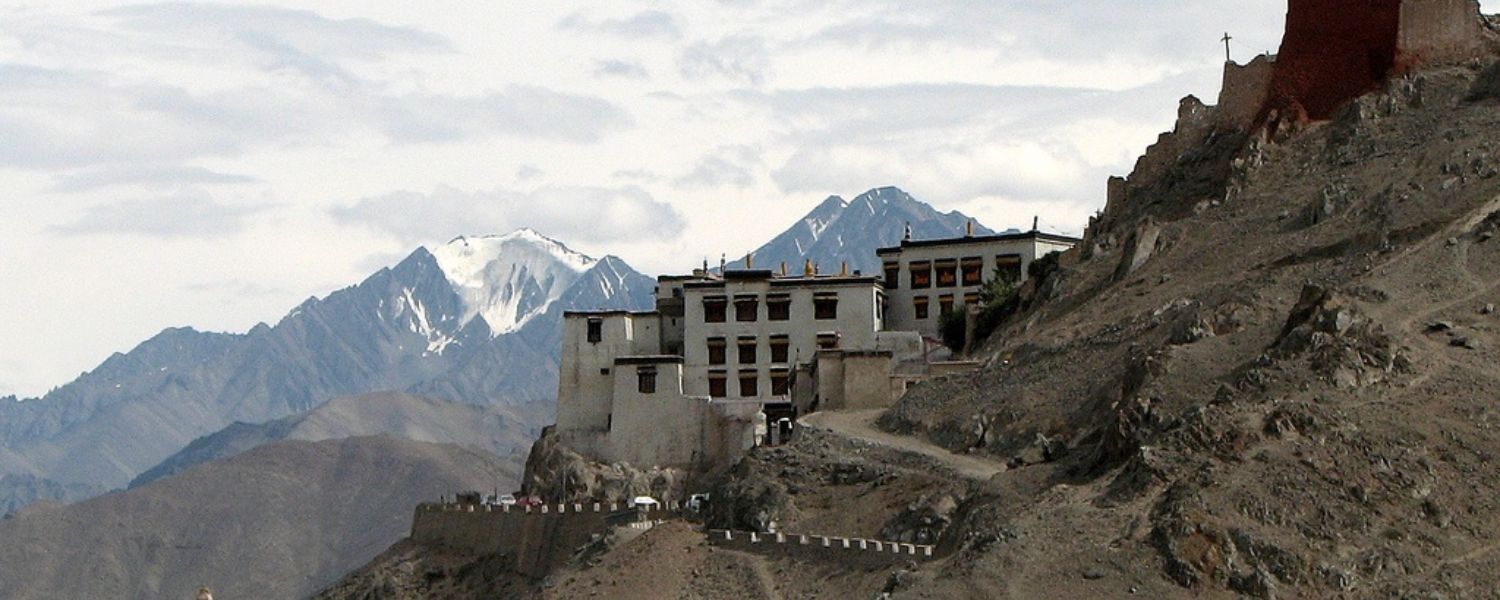
However, Shey, once the summer capital of Ladakh, is home to the Shey Monastery and Palace.
Further, situated on a hillock overlooking the Indus River, Shey Palace was built in the 17th century by King Deldan Namgyal.
The monastery inside the palace complex houses a 12-meter-high Shakyamuni Buddha statue made of copper and gold, one of the largest in Ladakh.
However, the walls of the monastery are adorned with beautiful murals and paintings.
Trekking to Shey offers a glimpse into cave monasteries of Ladakh royal history and its deep-rooted Buddhist traditions, with the serene surroundings adding to the overall experience.
6. Phugtal Monastery
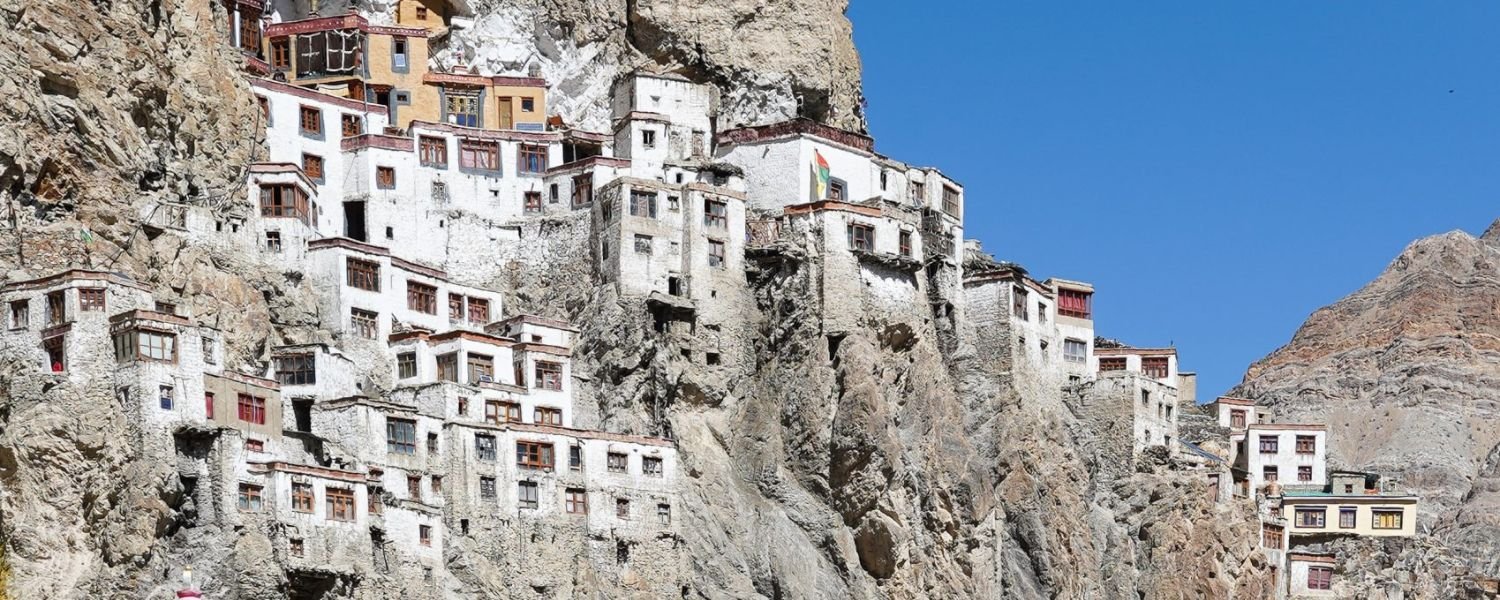
Phugtal Monastery, one of the most isolated cave monasteries of Ladakh, offers a truly unique trekking experience.
Accessible only by foot, this monastery is built into the cliffside of a remote gorge in the Lungnak Valley.
Established in the early 12th century by the Famous monasteries in Ladakh scholar Gangsem Sherap Sampo, Phugtal is a haven of tranquility.
The journey to Phugtal involves a challenging trek through rugged terrain, crossing rivers, and climbing steep paths.
However, the reward is immense – an opportunity to witness the monastic life in its most unadulterated form, with breathtaking views of the surrounding mountains and valleys.
7. Stok Gompa and Palace
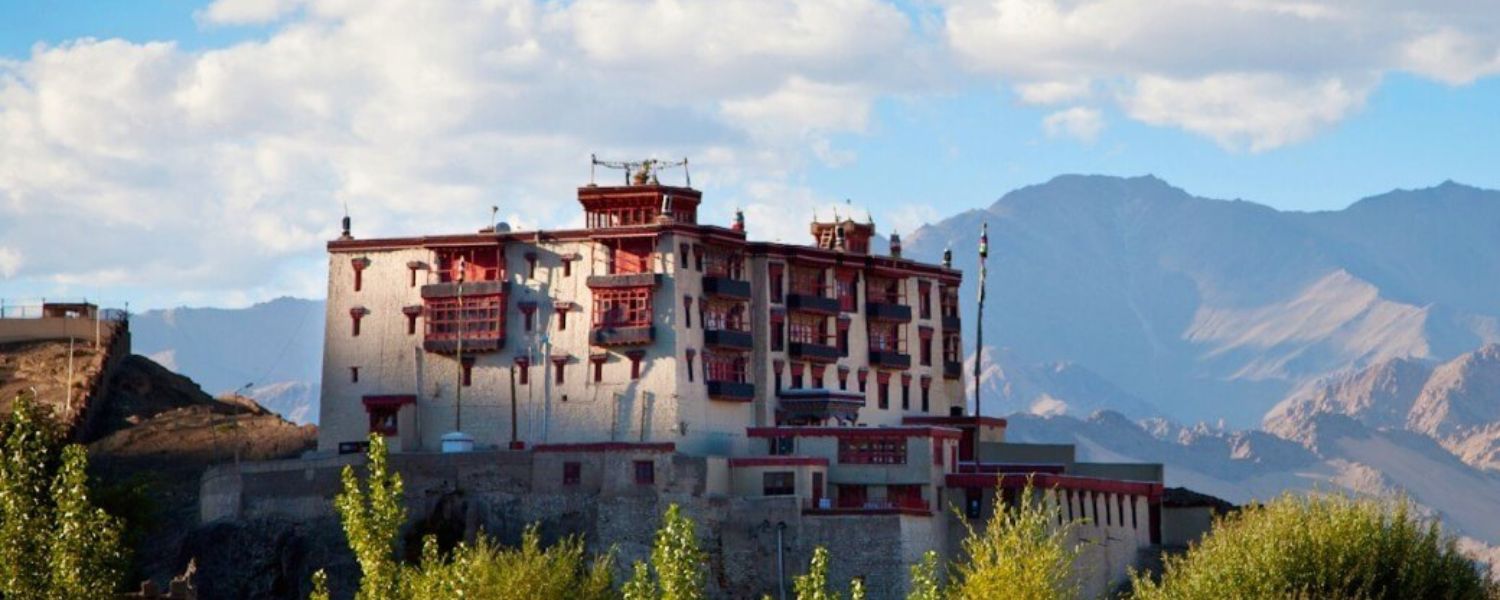
The Stok Gompa and Palace, located in the Stok village near Leh, are significant for their historical and cultural heritage.
The palace, built in the early 19th century, is the residence of the royal family of cave monasteries of Ladakh.
It also houses a museum that displays a rich collection of artifacts, including royal attire, thangkas, and traditional weapons.
The Stok Monastery, located nearby, is known for its annual dance-mask festival.
Trekkers visiting Stok can enjoy a blend of cultural exploration and spiritual retreats, with the stunning landscape providing a perfect backdrop.
8. Spituk Monastery
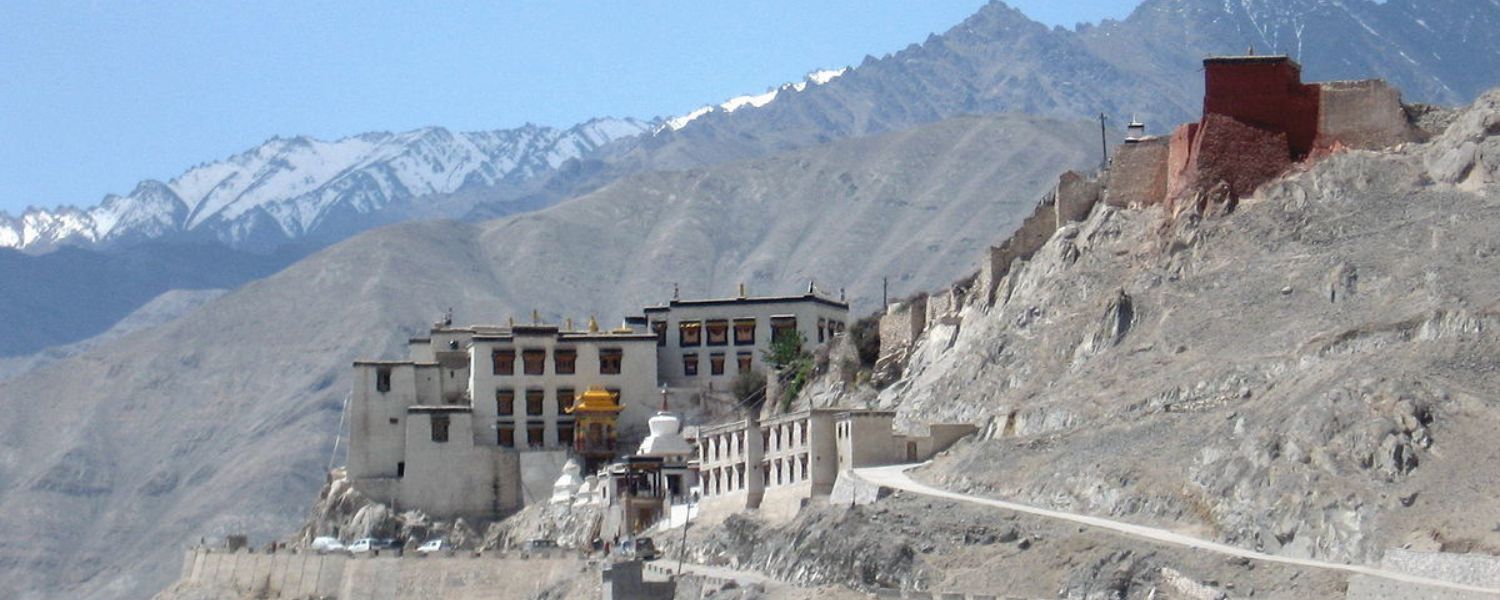
Spituk Monastery, known as Pethup Gompa, is perched on a hill overlooking the Indus River.
Moreover, founded in the 11th century by Od-de, the elder brother of Lha Lama Changchub Od, Spituk is known for its collection of Buddhist artifacts, including ancient masks, thangkas, and statues.
The monastery hosts the Gustor Festival, a significant event featuring masked dances and rituals.
The panoramic views from Spituk are breathtaking, and trekkers can enjoy the serene atmosphere while exploring the various halls and shrines within the complex.
9. Tsemo Monastery
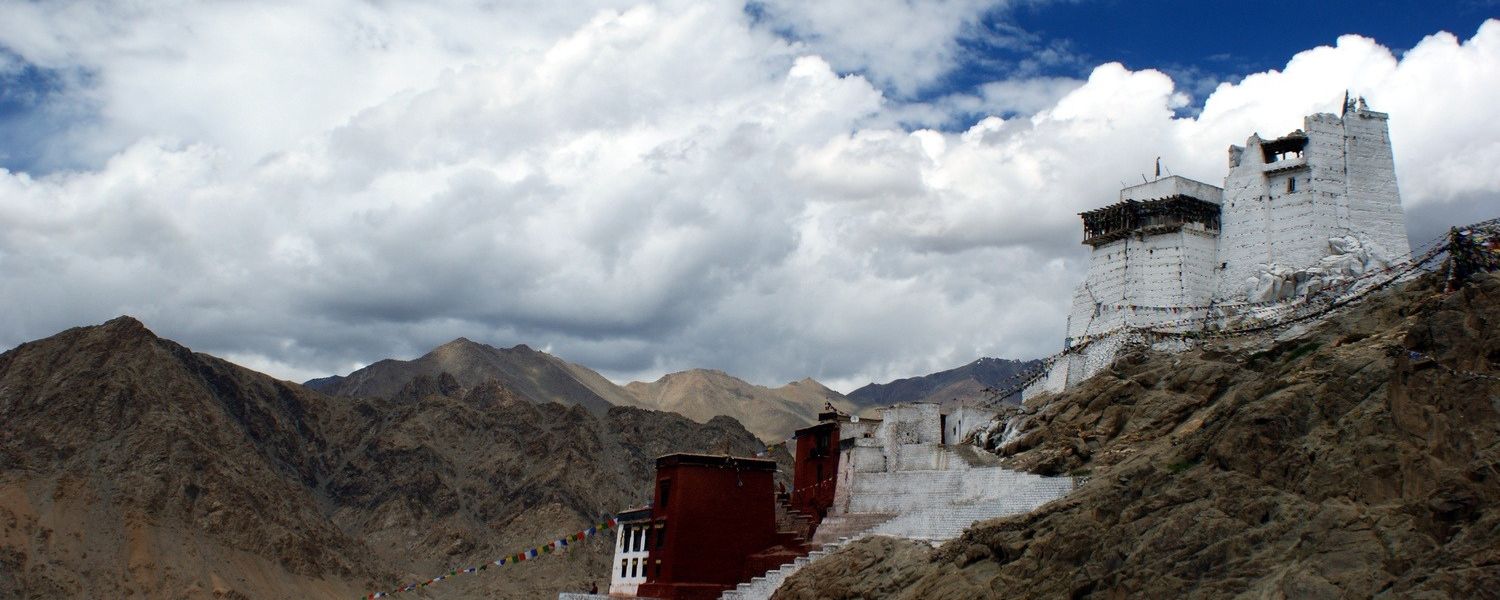
Tsemo Monastery, located above Leh Palace, is a prominent landmark in Leh.
Moreover, founded in the 15th century by King Tashi Namgyal, it houses a three-story high gold statue of Maitreya Buddha and ancient manuscripts.
The monastery offers stunning views of Leh town and the surrounding mountains.
Trekking to Tsemo is relatively easy and provides an excellent opportunity to explore Leh’s historical and spiritual essence.
The tranquility of Tsemo, combined with its rich history, makes it a rewarding destination for trekkers.
10. Kursha Monastery
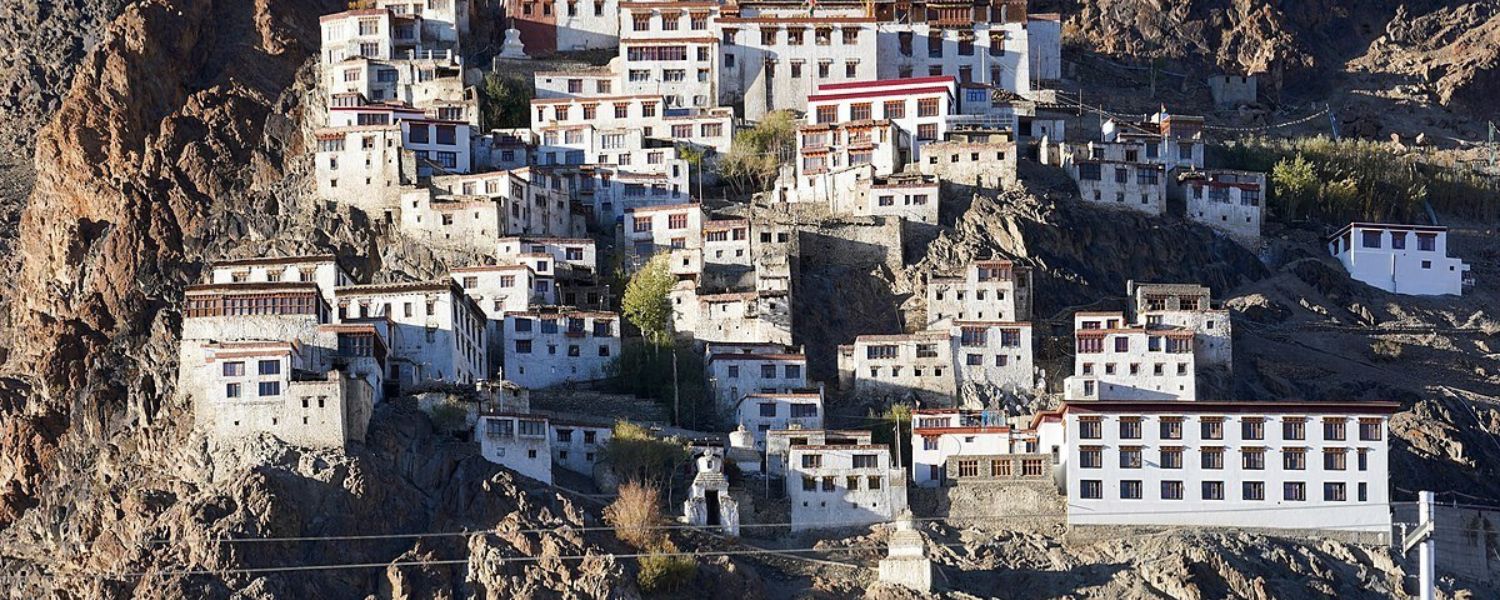
Kursha Monastery, located in the remote Zanskar Valley, is one of the largest and oldest monasteries in the region.
Founded in the 10th century by Phagspa Shesrab, it is home to around 100 monks. The monastery’s highlight is the annual Gustor Festival, celebrated fervently.
The trek to Kursha is challenging, involving crossing high mountain passes and rugged terrain, but the experience of witnessing the monastic life and the stunning landscapes of Zanskar is unparalleled.
Additionally, if you’re exploring the region, taste the Famous Food in Ladakh, which adds to the unique cultural experience.
Kursha’s serene environment and spiritual ambiance make it a must-visit for trekkers.
11. Likir Monastery
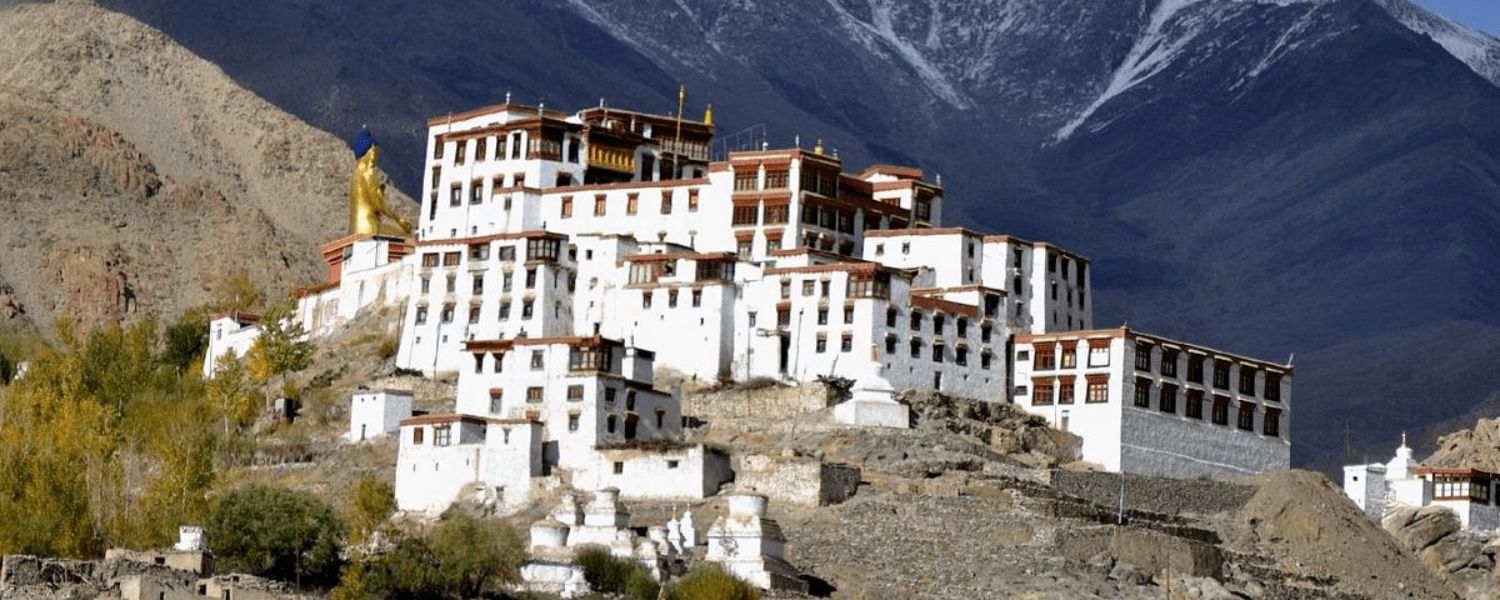
Situated on a hillock in the Likir village, Likir Monastery is known for its giant statue of Maitreya Buddha, standing 23 meters tall.
Founded in the 11th century, the monastery belongs to the Gelugpa sect of Tibetan Buddhism. Moreover, the complex houses a rich collection of ancient manuscripts, thangkas, and statues.
The annual Dosmoche Festival, celebrated with masked dances, attracts many visitors.
Trekking to Likir offers a blend of cultural immersion and spiritual exploration, with the stunning views of the surrounding mountains enhancing the experience.
12. Sakya Monastery
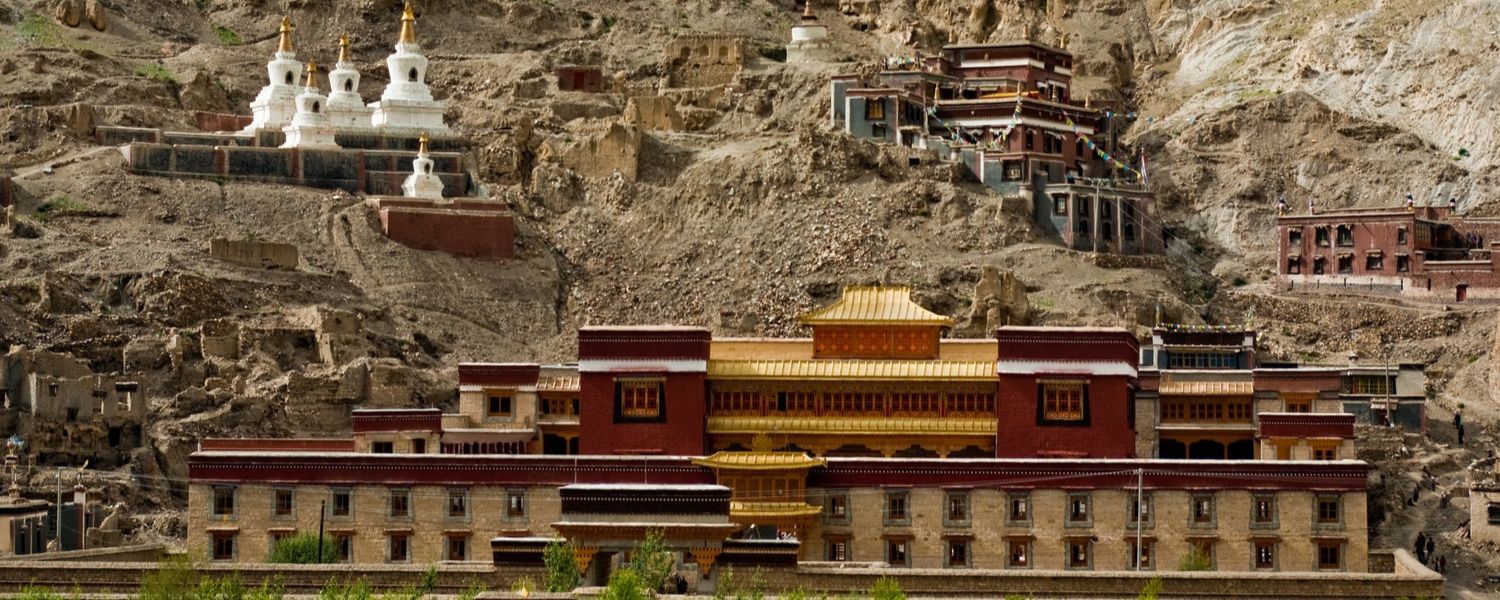
Sakya Monastery, located in the village of Sakya, is a significant center of the Sakya sect of Tibetan Buddhism.
Established in the 11th century, it is known for its unique architecture and rich collection of Buddhist artifacts.
The monastery’s highlight is the annual Sakya Tsechu Festival, featuring traditional dances and rituals.
Trekking to Sakya provides an opportunity to explore the rich cultural heritage of the Sakya sect and take in the peaceful rural atmosphere.
The trek is moderately challenging, making it suitable for most trekkers.
13. Lamayuru Monastery
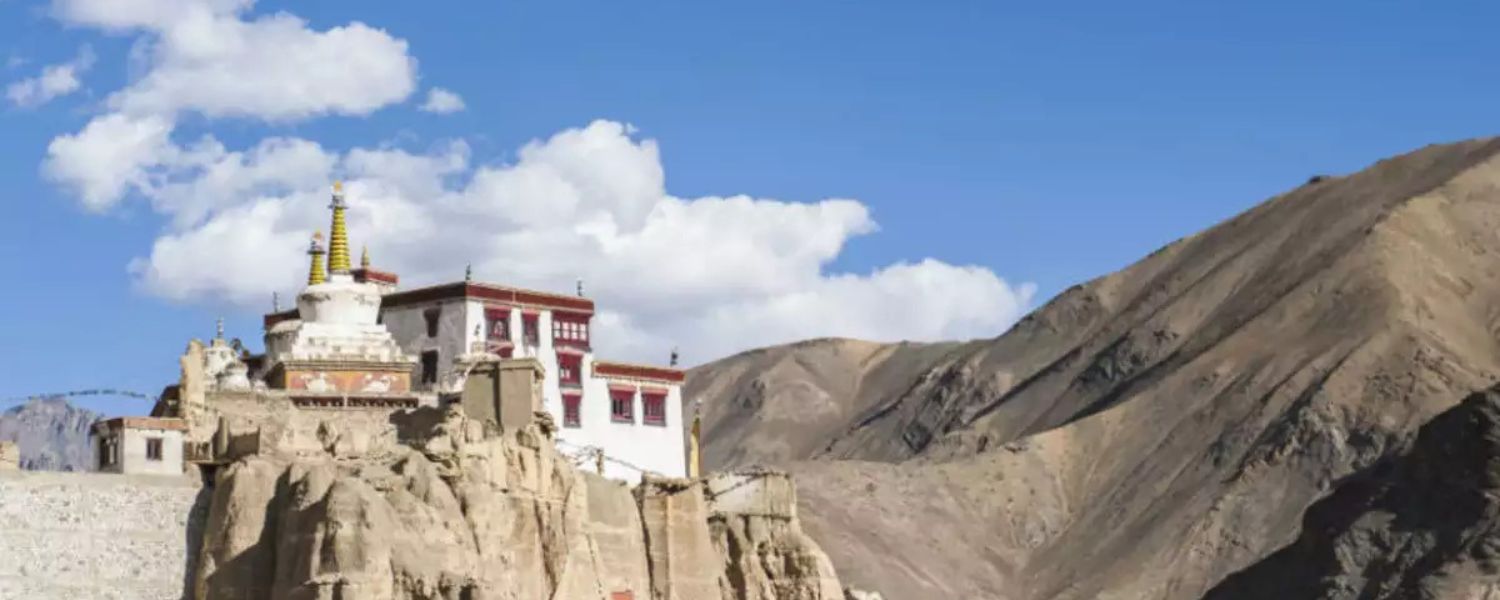
Lamayuru Monastery, also known as Yuru Gompa, is one of the oldest and most significant cave monasteries of Ladakh.
Established in the 10th century by Mahasiddha Naropa, it is renowned for its annual Yuru Kabgyat Festival, featuring sacred mask dances.
The monastery’s location on a high cliff offers stunning views of the moon-like landscape known as the ‘Moonland.’
Trekking to Lamayuru involves traversing rugged terrain and high mountain passes, but the monastery’s breathtaking views and spiritual ambiance make it a rewarding experience.
14. Rizong Monastery
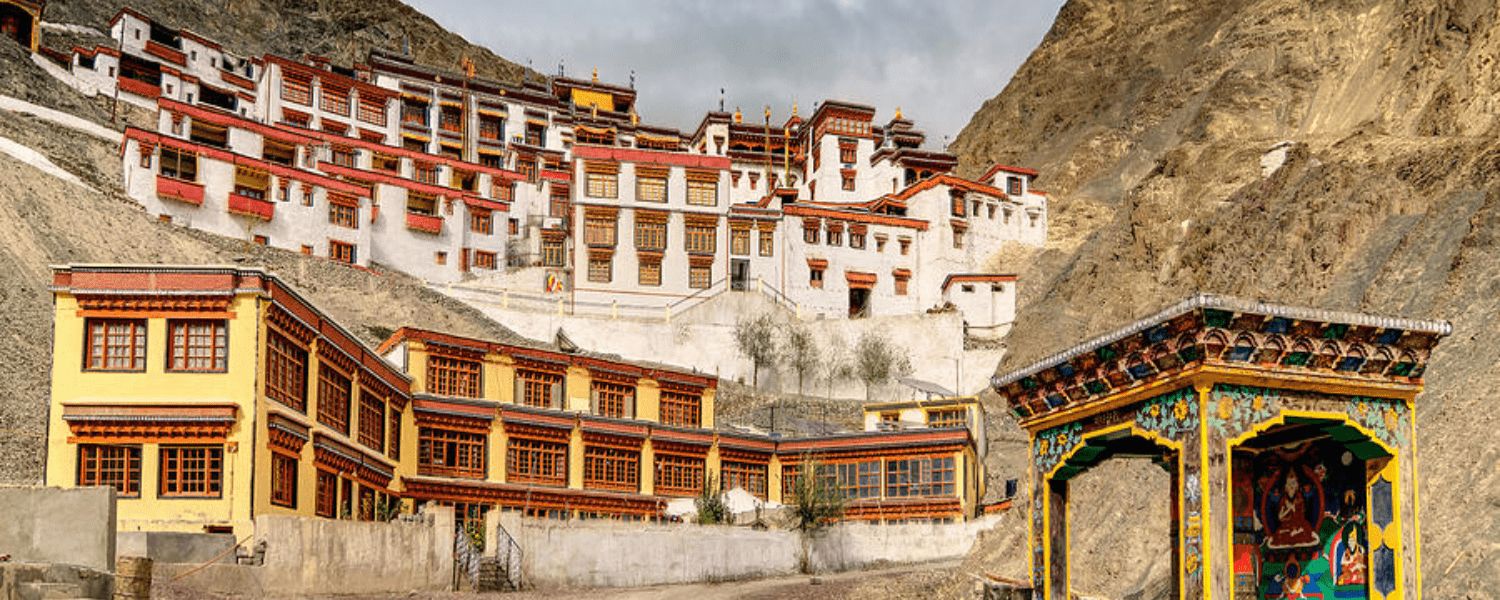
Rizong Monastery, located in a remote valley north of the Indus River, attracts attention for its strict monastic discipline and serene environment.
Lama Tsultim Nima founded it in the early 19th century, and people often call it the ‘Paradise for Meditation.’
The monastery is home to around 40 monks who lead an austere lifestyle dedicated to meditation and spiritual practice.
Trekking to Rizong offers an opportunity to experience the monastic life in its purest form, with the tranquil surroundings providing a perfect setting for reflection and meditation.
15. Sumda Chun Monastery
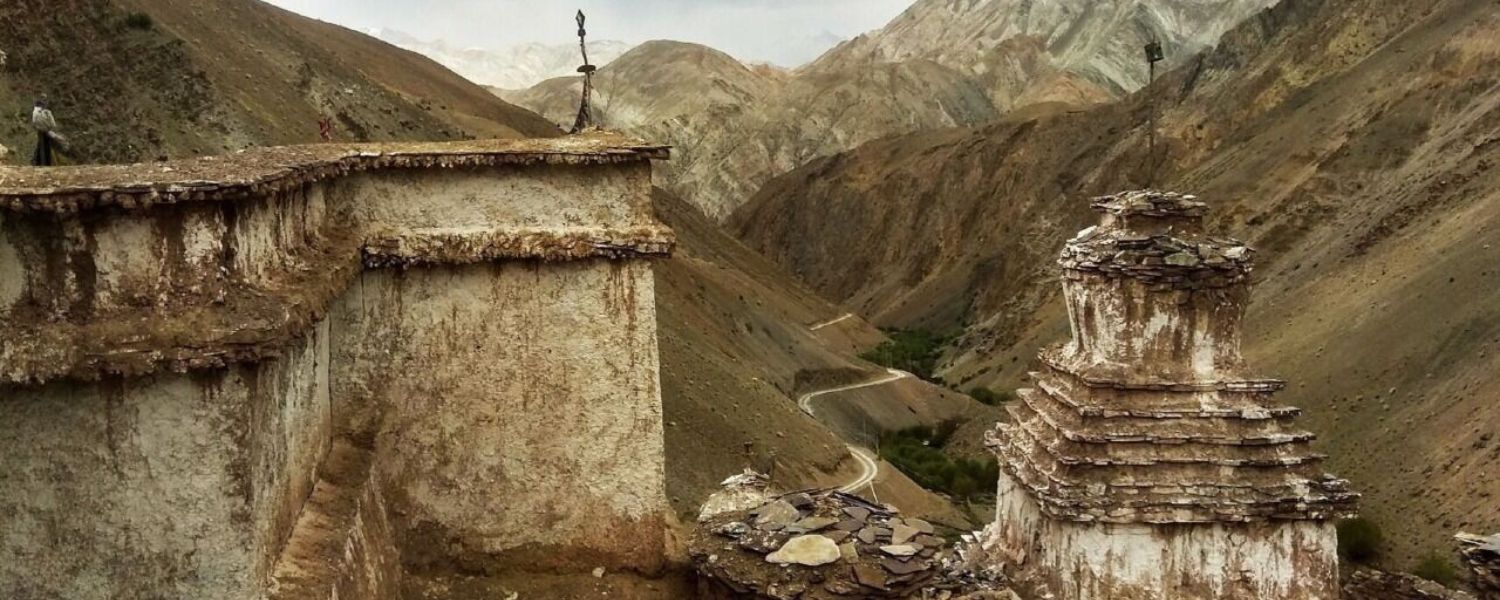
Sumda Chun Monastery, located in a remote valley, is one of Ladakh’s lesser-known but highly significant cave monasteries.
Established in the 11th century, it is known for its unique woodwork and ancient murals.
The trek to Sumda Chun is challenging, involving crossing high passes and rugged terrain, but the experience of exploring this hidden gem is unparalleled.
The monastery’s serene environment and rich artistic heritage make it a must-visit for those seeking an off-the-beaten-path experience in the cave monasteries of Ladakh.
16. Shanti Stupa
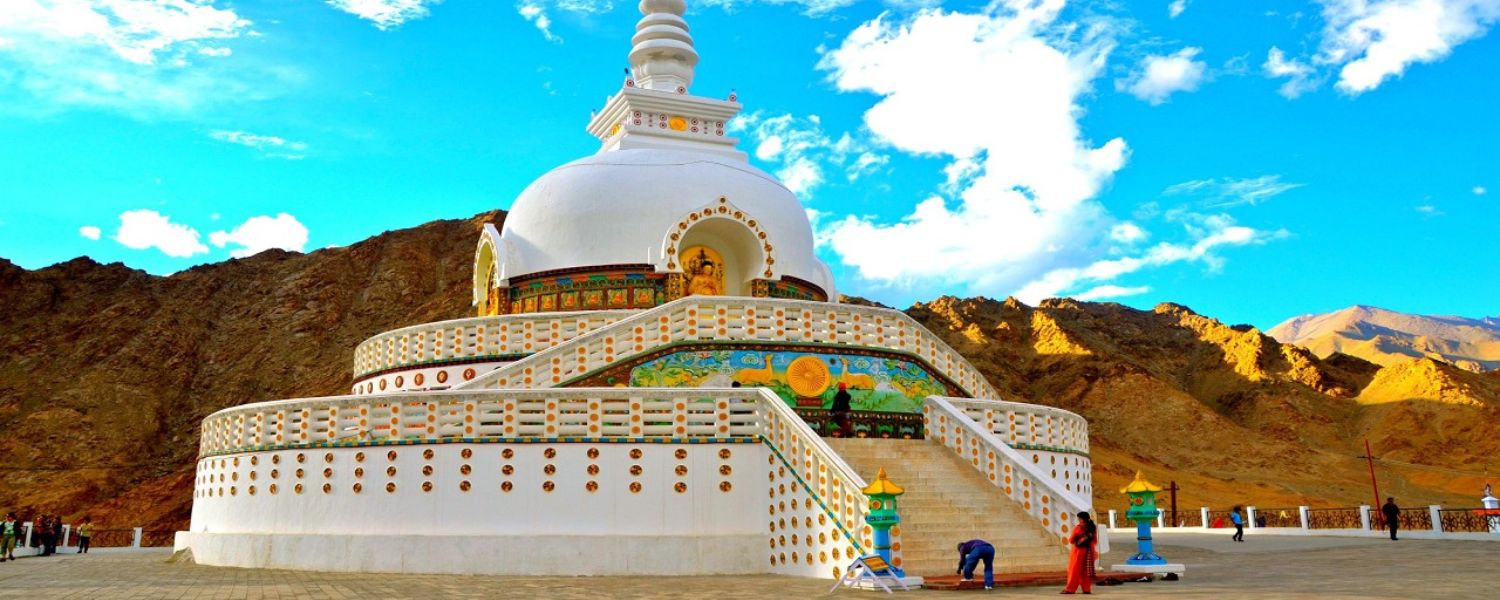
Shanti Stupa, located on a hilltop in Leh, symbolizes peace and harmony. Built-in 1991 by Japanese Buddhist Bhikshu Gyomyo Nakamura, it commemorates 2500 years of Buddhism and promotes world peace.
At its base, the stupa houses relics of the Buddha, included in the 14th Dalai Lama’s shrine. Trekking to Shanti Stupa is relatively easy, offering panoramic views of Leh and the surrounding mountains.
Moreover, the serene environment and the stunning views make it a popular place for trekkers and tourists.
17. Saboo Monastery
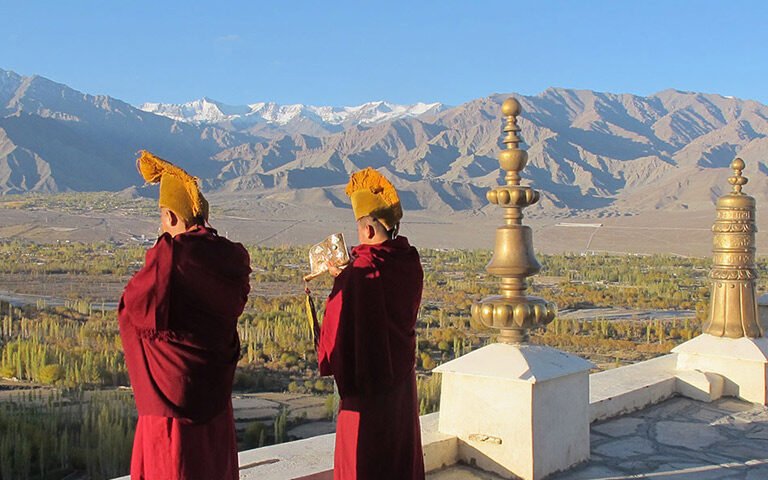
Saboo Monastery is a lesser-known but charming monastery in the Saboo village near Leh.
Established in the early 19th century, it is known for its annual festival featuring traditional dances and rituals.
The trek to Saboo is relatively easy and offers an chance to experience Ladakh’s rustic lifestyle.
The monastery’s serene environment and the warm hospitality of the villagers make it a rewarding experience for trekkers seeking a blend of cultural exploration and spiritual retreats.
18. Stakna Gompa
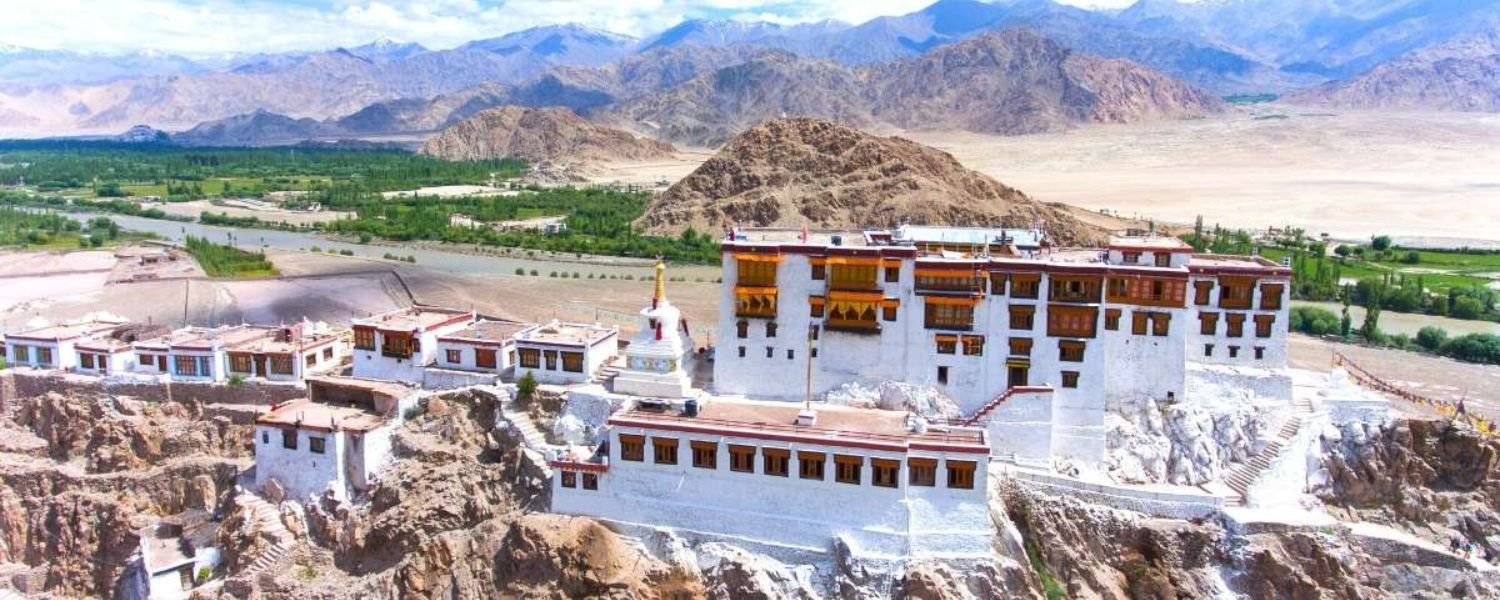
Stakna Gompa, perched on a hillock overlooking the Indus River, boasts a stunning location and a rich collection of Buddhist artifacts.
Moreover, a Bhutanese scholar founded it in the late 16th century and named it ‘Stakna,’ meaning ‘Tiger’s Nose,’ due to its location on a tiger-nose-shaped hill.
The monastery houses a beautiful statue of Arya Avalokitesvara and various ancient thangkas.
Trekking to Stakna offers breathtaking views of the Indus Valley and an opportunity to explore Ladakh’s spiritual and artistic heritage.
19. Chamchung Shrine
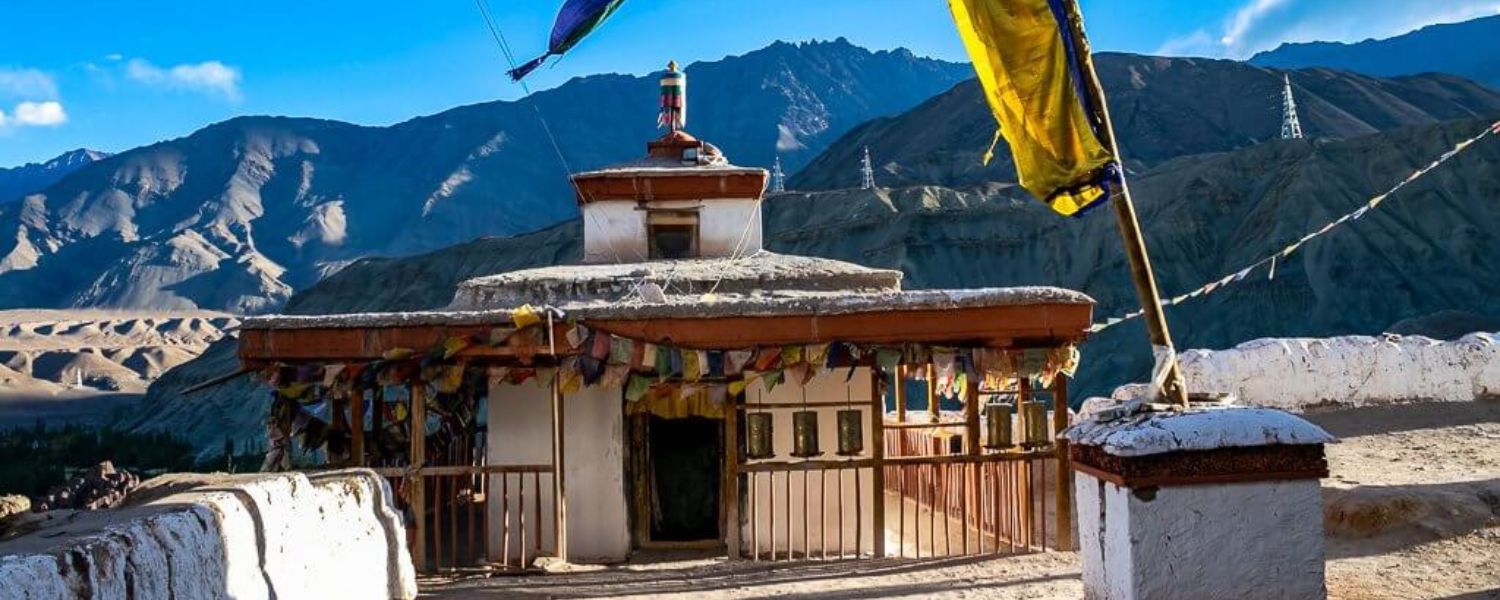
Chamchung Shrine, located in a remote village, is a small but significant pilgrimage site. Known for its serene environment and spiritual ambiance, it offers a tranquil retreat for trekkers.
However, the shrine honors Guru Padmasambhava, and its simple yet profound architecture reflects the deep-rooted Buddhist traditions of the region.
Trekking to Chamchung involves a moderate hike through picturesque landscapes, making it a perfect place for those seeking peace and solitude.
20. Matho Monastery
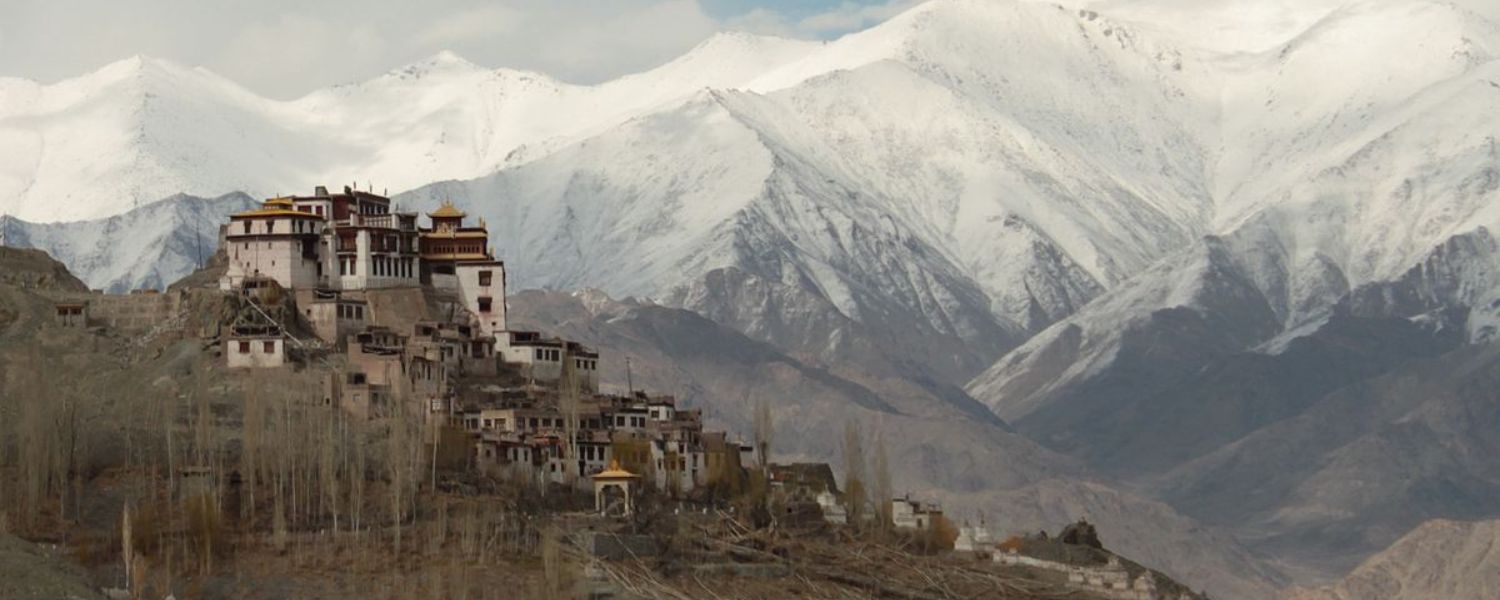
Matho Monastery, located in the Matho village near Leh, is the only cave monasteries of Ladakh belonging to the Sakya sect of Tibetan Buddhism.
However, founded in the early 16th century, the temple is renowned for its annual oracle festival, ‘Matho Nagrang,’ where monks become oracles and predict the future.
Moreover, the monastery houses a rich collection of ancient thangkas and statues.
Trekking to Matho offers an opportunity to witness this unique festival and explore the rich cultural heritage of the Sakya sect.
FAQs
Q. What is the best time to trek to the cave monasteries of Ladakh?
A. The best time to trek to the cave monasteries of Ladakh is from June to September when the nature is pleasant, and the trekking routes are accessible.
Q. Are the treks to the cave monasteries of Ladakh suitable for beginners?
A. While some treks are suitable for beginners, others, like the trek to Phugtal Monastery, are more challenging and require good fitness and trekking experience.
Q. You should pack for trekking to the cave monasteries of Ladakh?
A. Pack essential trekking gear, including sturdy hiking boots, warm clothing, a first-aid kit, water bottles, and snacks. It’s also advisable to carry a map and a compass.
Q. You can visit the cave monasteries of Ladakh independently, or do I need a guide?
A. While some monasteries offer easy access for independent visits, hiring a local guide for remote and challenging treks ensures safety and provides a better understanding of the region.
Q. Are there accommodations available near the cave monasteries of Ladakh?
A. Accommodations range from guesthouses and Ladakh monastery stay to camping options near some monasteries. Planning and booking in advance is advisable, especially during peak trekking season.
Q. How can you respect the local culture and traditions while visiting the cave monasteries?
A. Dress modestly, avoid loud noises, and always ask for permission before taking photographs inside the monasteries. Respect the monastic routines and participate in prayers and rituals if invited.
Conclusion
Trekking to the remote cave monasteries of Ladakh is a journey through time, spirituality, and breathtaking landscapes.
Each monastery’s unique history and serene environment offer a profound experience combining adventure and deep spiritual insight.
Whether you are a seasoned trekker or a spiritual seeker, these monasteries provide a perfect retreat into the tranquility and mysticism of the Himalayas.
